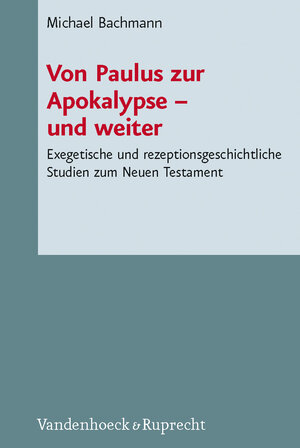
×
![Buchcover ISBN 9783525533987]()
Von Paulus zur Apokalypse – und weiter
Exegetische und rezeptionsgeschichtliche Studien zum Neuen Testament; (samt englischsprachigen summaries)
von Michael BachmannAn earlier anthology of M. Bachmann (NTOA 40: Antijudaismus in the Letter to the Galatians?) was concerned above all with the Letter to the Galatians and took the position that this polemic was not anti-Jewish, although often misconstrued as such – even though there was indeed abundant anti-Jewish sentiment in the pagan Christian church. That volume, which appeared in 1999, caused considerable discussion because of its suggestion that Paul´s reference to “erga nomou” (Galatians 2,16 et al.) was pointing to the “boundary markers” (J. D. G. Dunn) as well as to the Halakhot. To this was added the controversy of another volume edited by Bachmann in 2005 entitled “Lutheran and New Perspectives on Paul.” This collection of articles extended the discussion and included studies on other themes on which Bachmann had written very innovatively in the past decades (Paul´s logic, critical interpretation of the Letter to the Hebrews (particularly 2,1-4 and 5,1-10), the heavenly temple in the Gospels of Luke and John, the positive depiction of the apocalyptic horseman, history of Bible reception and art history). This collection of some 30 articles begins with a methodological contribution (first published here): Bachmann proclaims a historically oriented method of interpretation which unites synchronous and diachronous approaches, as opposed to the method (of U. Luz among others) that stresses more subjective vantage points.


